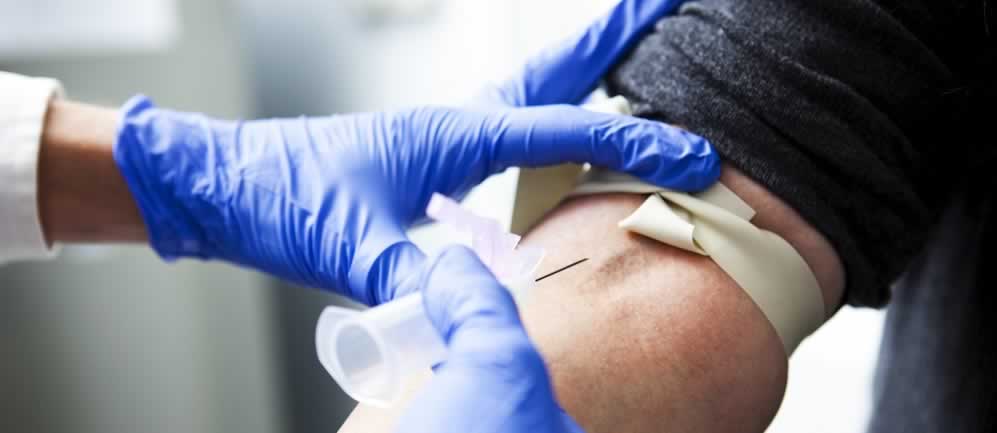Drawing blood is one of the skills required of a registered nurse. While there are phlebotomists that work at the hospital, you can't count on them to always be there when your patient needs an important lab test done. Here are the basic procedures for drawing blood.
Be Confident
If you are calm and collected, your patient will also be calm. An anxious patient is one with disappearing veins, so take a deep breath and be professional. Don't let a preceptor pressure you into doing venipuncture if you don't feel comfortable doing it; it lessens your chance of success.
Assemble Your Supplies and Wash Your Hands
These tools include needles of different gauges, collection tubes like vacutainers (vials that are sealed with negative pressure), needle holders, 2x2 gauze, a tourniquet, gloves, alcohol prep pads, cotton balls and tape or stretch gauze to stop the bleeding after the blood is drawn.
Selection of the Site
For the majority of patients, blood will be drawn from the arm. This graphic shows the most commonly used sites for drawing blood. In reality, each person is anatomically very different, so the site you use will depend on the patient.
Apply the tourniquet snugly, and ask the patient to make a fist. This will cause the veins to appear more prominent. Then, use your fingertips to find a good superficial vein suitable for venipuncture. Ideal veins will be straight and feel bouncy and plump.
Prepare to Poke
Apply your gloves, and cleanse the area with an alcohol swab. "Anchor" the vein by holding it firmly above the insertion site to prevent the vein from rolling away when it is poked.
Stick It
Position the needle bevel up (the bevel is the hole). Insert the needle into the skin at a 15 degree angle. When you break the skin, go quickly until you feel the slight resistance of piercing the vein. The hub of the needle will have a "flash," meaning a tiny bit of blood will appear, letting you know you are in the vein. This is the hard part, and it may take some adjustments. You may have gone too deep and pierced through the vein, or you may be too close to the vein wall and be unable to draw blood. Make small moves to see if you can draw blood in the same stick.
Remove the tourniquet, and insert the vacutainer to the opposite side of the needle. If you need multiple vials, hold the needle as steady as possible to minimize pain.
Remove the needle quickly from the vein and hold pressure to the injection site with the gauze. Then tape down the gauze or a cotton ball, and instruct the patient to leave it on for at least 15 minutes. Discard the used needle into a sharps container, and wash your hands.
Remember the following:
- The only way to become proficient is with practice.
- Practice finding veins on your friends and family.
- Don't leave the tourniquet on for longer than one minute or so. If you need more time, remove it, wait for three minutes and then try again.

